
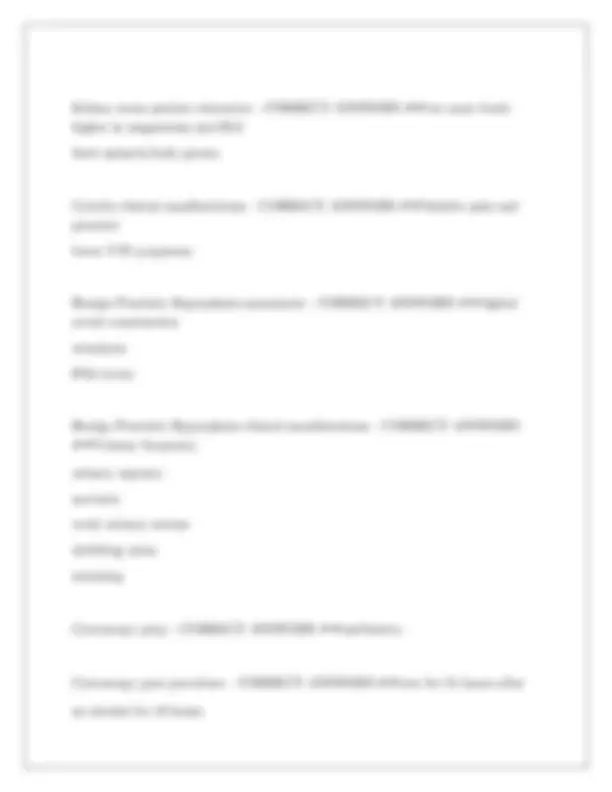
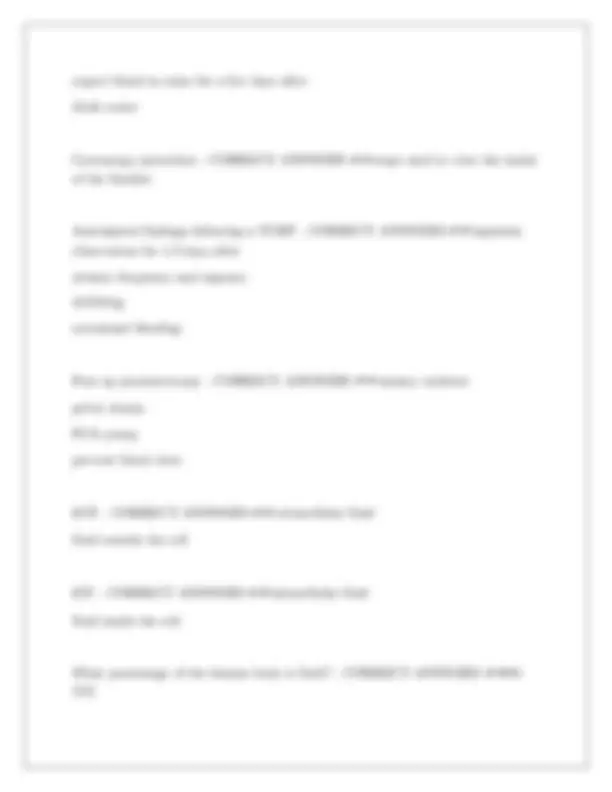
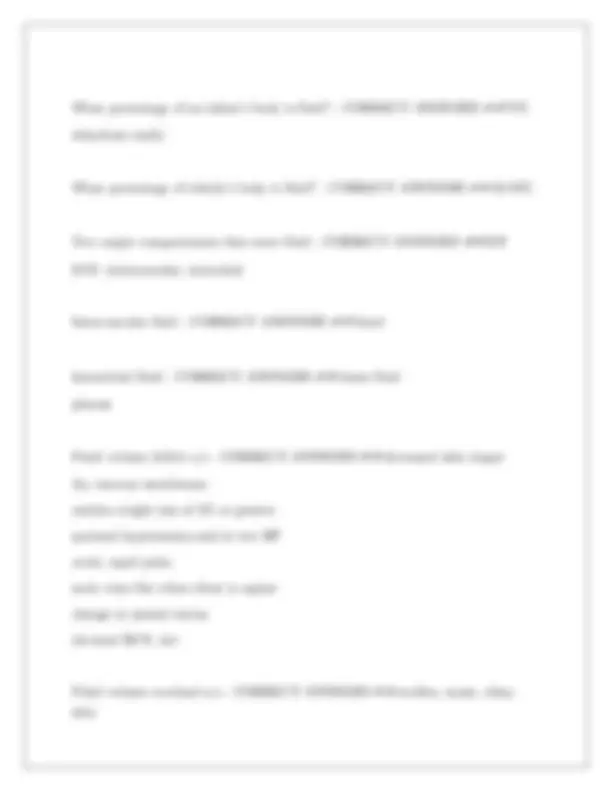
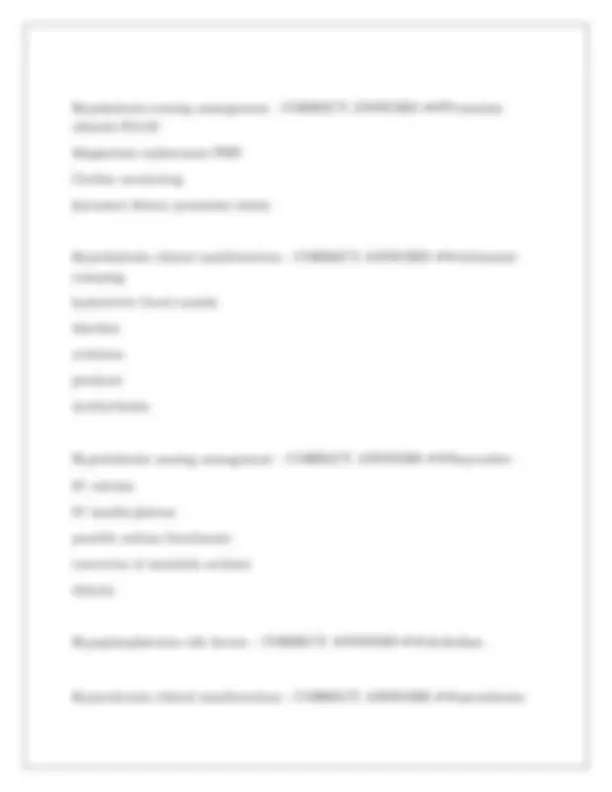
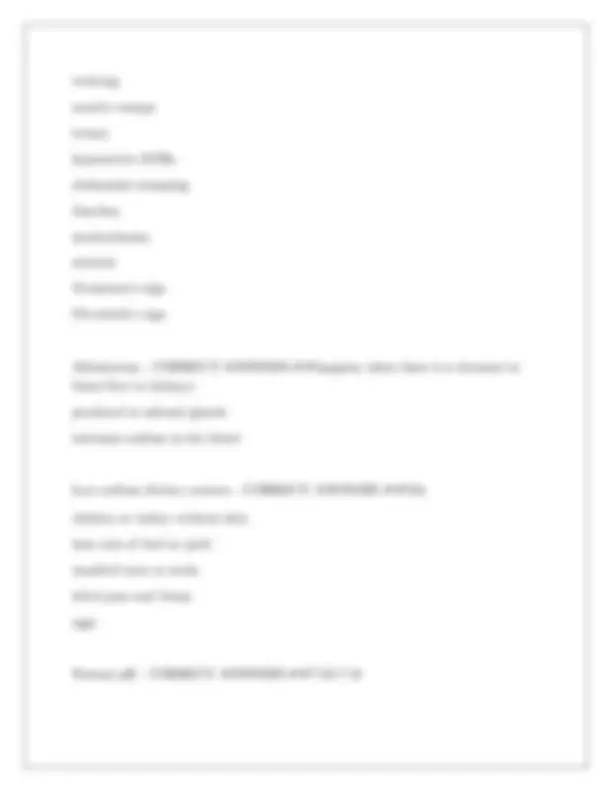
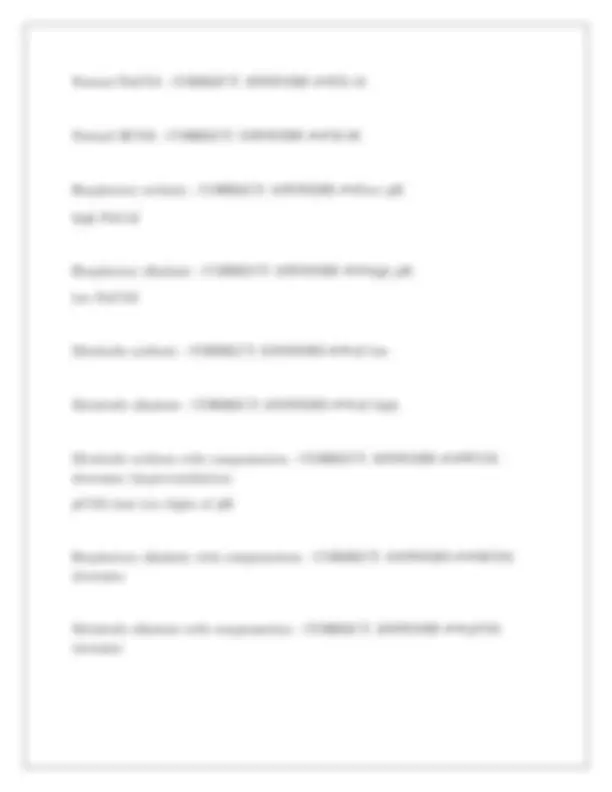


Study with the several resources on Docsity

Earn points by helping other students or get them with a premium plan


Prepare for your exams
Study with the several resources on Docsity

Earn points to download
Earn points by helping other students or get them with a premium plan
Community
Ask the community for help and clear up your study doubts
Discover the best universities in your country according to Docsity users
Free resources
Download our free guides on studying techniques, anxiety management strategies, and thesis advice from Docsity tutors
A comprehensive review of key concepts related to gastrointestinal and fluid & electrolyte balance, covering topics such as appendicitis, ibs, colorectal cancer, hiatal hernia, peptic ulcer disease, constipation, kidney stones, cystitis, benign prostatic hyperplasia, cystoscopy, and fluid volume imbalances. It includes multiple-choice questions with correct answers, making it a valuable resource for students preparing for exams or reviewing important concepts.
Typology: Exams
1 / 11

This page cannot be seen from the preview
Don't miss anything!







Appendicitis labs - CORRECT ANSWERS ✔✔WBC Appendicitis imaging studies - CORRECT ANSWERS ✔✔CT scan IBS pharmacological treatment - CORRECT ANSWERS ✔✔Imodium Toxic megacolon - CORRECT ANSWERS ✔✔Ulcerative colitis Life threatening condition Colorectal cancer clinical manifestations - CORRECT ANSWERS ✔✔bloody stool Postop bowel resection activity level - CORRECT ANSWERS ✔✔up ad lib Postop bowel resection ambulation - CORRECT ANSWERS ✔✔helps increase motility Swallowing disorder dietary recommendations - CORRECT ANSWERS ✔✔thickened liquids mechanical soft puree
Hiatal hernia clinical manifestations - CORRECT ANSWERS ✔✔heartburn Hiatal hernia patient education - CORRECT ANSWERS ✔✔sit up after eating Peptic ulcer disease clinical manifestations - CORRECT ANSWERS ✔✔abdominal pain pain at night poor appetite weight loss C diff nursing management - CORRECT ANSWERS ✔✔WASH YOUR HANDS Constipation risk factors - CORRECT ANSWERS ✔✔obstruction Constipation patient education - CORRECT ANSWERS ✔✔drink fluids exercise fiber Kidney stone etiology - CORRECT ANSWERS ✔✔calcium, oxalate, or uric acid Kidney stone risk factors - CORRECT ANSWERS ✔✔diet rich in purines (animal proteins) Kidney stone nursing management - CORRECT ANSWERS ✔✔pain dehydration
expect blood in urine for a few days after drink water Cystoscopy procedure - CORRECT ANSWERS ✔✔scope used to view the inside of the bladder Anticipated findings following a TURP - CORRECT ANSWERS ✔✔inpatient observation for 1-2 days after urinary frequency and urgency dribbling occasional bleeding Post op prostatectomy - CORRECT ANSWERS ✔✔urinary catheter pelvic drains PCA pump prevent blood clots ECF - CORRECT ANSWERS ✔✔extracellular fluid fluid outside the cell ICF - CORRECT ANSWERS ✔✔intracellular fluid fluid inside the cell What percentage of the human body is fluid? - CORRECT ANSWERS ✔✔60- 75%
What percentage of an infant's body is fluid? - CORRECT ANSWERS ✔✔75% dehydrate easily What percentage of elderly's body is fluid? - CORRECT ANSWERS ✔✔40-50% Two major compartments that store fluid - CORRECT ANSWERS ✔✔ICF ECF: intravascular, intersitial Intravascular fluid - CORRECT ANSWERS ✔✔blood Interstitial fluid - CORRECT ANSWERS ✔✔tissue fluid plasma Fluid volume deficit s/s - CORRECT ANSWERS ✔✔decreased skin turgor dry mucous membranes sudden weight loss of 2% or greater postural hypotension and/or low BP weak, rapid pulse neck veins flat when client is supine change in mental status elevated BUN, hct Fluid volume overload s/s - CORRECT ANSWERS ✔✔swollen, moist, shiny skin
Normal calcium level - CORRECT ANSWERS ✔✔8.5-10. Normal phosphate level - CORRECT ANSWERS ✔✔3.0-4. Normal magnesium level - CORRECT ANSWERS ✔✔1.6-2. Hyponatremia clinical manifestation - CORRECT ANSWERS ✔✔confusion altered LOC restlessness lethargy seizure coma Hypokalemia clinical manifestations - CORRECT ANSWERS ✔✔cardiac arrhythmias paralysis thirst muscle pain hyporeflexia weakness tetany increased UOP fatigue decreased bowel sounds
Hypokalemia nursing management - CORRECT ANSWERS ✔✔Potassium chloride PO/IV Magnesium replacement PRN Cardiac monitoring Increased dietary potassium intake Hyperkalemia clinical manifestations - CORRECT ANSWERS ✔✔abdominal cramping hyperactive bowel sounds diarrhea weakness paralysis dysrhythmias Hyperkalemia nursing management - CORRECT ANSWERS ✔✔Kayexelate IV calcium IV insulin/glucose possible sodium bicarbonate correction of metabolic acidosis dialysis Hypophosphatemia risk factors - CORRECT ANSWERS ✔✔alcoholism Hypocalcemia clinical manifestations - CORRECT ANSWERS ✔✔paresthesias
Normal PaCO2 - CORRECT ANSWERS ✔✔35- Normal HCO3 - CORRECT ANSWERS ✔✔22- Respiratory acidosis - CORRECT ANSWERS ✔✔low pH high PaCo Respiratory alkalosis - CORRECT ANSWERS ✔✔high pH low PaCO Metabolic acidosis - CORRECT ANSWERS ✔✔all low Metabolic alkalosis - CORRECT ANSWERS ✔✔all high Metabolic acidosis with compensation - CORRECT ANSWERS ✔✔PCO decreases (hyperventilation) pCO2=last two digits of pH Respiratory alkalosis with compensation - CORRECT ANSWERS ✔✔HCO decreases Metabolic alkalosis with compensation - CORRECT ANSWERS ✔✔pCO increases
Respiratory acidosis with compensation - CORRECT ANSWERS ✔✔HCO increases Metabolic alkalosis causes - CORRECT ANSWERS ✔✔gastric acid (vomiting) diuretic use chloride depletion